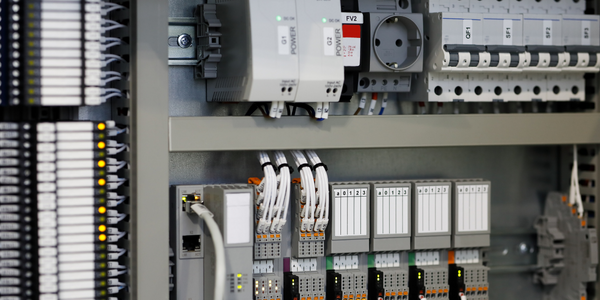Customer Company Size
Mid-size Company
Region
- Europe
Country
- France
Product
- Dataiku
- Targetor
- Amazon Web Services (AWS)
Tech Stack
- Dataiku
- Amazon Web Services (AWS)
Implementation Scale
- Enterprise-wide Deployment
Impact Metrics
- Productivity Improvements
- Customer Satisfaction
Technology Category
- Analytics & Modeling - Machine Learning
- Platform as a Service (PaaS) - Data Management Platforms
Applicable Industries
- Retail
Applicable Functions
- Sales & Marketing
Use Cases
- Predictive Quality Analytics
- Demand Planning & Forecasting
Services
- Data Science Services
About The Customer
Showroomprivé is an e-commerce retailer specialized in flash sales. The company has approximately 950 employees and is present in 7 countries across Europe. The company has a data team of 16 members across 4 data teams. Showroomprivé has been at the cutting-edge of leveraging data for improvements both in the product and in customer service as well as on the operational and business side. The company has been working from the ground up to develop its capacity to use data for these improvements.
The Challenge
Showroomprivé, an e-commerce retailer specialized in flash sales, faced challenges in targeting their marketing emails. Until 2016, the team selected the target audience for these marketing emails manually based on what they know about the brand. However, this approach presented several challenges. Brands often have overlapping or broad audiences, which meant touching some prospective buyers multiple times, while others not at all. This also meant casting out a wide net, potentially sending emails to people who were not interested in that particular brand. The ultimate goals of the project was for the marketing team to be completely autonomous in targeting and sending these emails.
The Solution
Showroomprivé leveraged Dataiku to develop a machine learning-based targeting system for their marketing campaigns. The system, known as Targetor, allows marketers to generate their own machine learning-powered targeting recommendations. The company went through three iterations of Targetor to perfect the system and add additional features over the course of four years. The marketing and data teams were even able to make improvements for a second iteration of Targetor that provided a ranking of users instead of just a homogenous group, allowing marketers to better prioritize their campaigns. After about a year and a half of use by the marketing team, the data team at Showroomprivé was adding so much functionality and so many features that the model was becoming complex. They decided to undergo a project that would streamline the model, allowing them to continue to scale and add functionality for many years to come.
Operational Impact
Quantitative Benefit

Case Study missing?
Start adding your own!
Register with your work email and create a new case study profile for your business.
Related Case Studies.

Case Study
Improving Production Line Efficiency with Ethernet Micro RTU Controller
Moxa was asked to provide a connectivity solution for one of the world's leading cosmetics companies. This multinational corporation, with retail presence in 130 countries, 23 global braches, and over 66,000 employees, sought to improve the efficiency of their production process by migrating from manual monitoring to an automatic productivity monitoring system. The production line was being monitored by ABB Real-TPI, a factory information system that offers data collection and analysis to improve plant efficiency. Due to software limitations, the customer needed an OPC server and a corresponding I/O solution to collect data from additional sensor devices for the Real-TPI system. The goal is to enable the factory information system to more thoroughly collect data from every corner of the production line. This will improve its ability to measure Overall Equipment Effectiveness (OEE) and translate into increased production efficiencies. System Requirements • Instant status updates while still consuming minimal bandwidth to relieve strain on limited factory networks • Interoperable with ABB Real-TPI • Small form factor appropriate for deployment where space is scarce • Remote software management and configuration to simplify operations

Case Study
How Sirqul’s IoT Platform is Crafting Carrefour’s New In-Store Experiences
Carrefour Taiwan’s goal is to be completely digital by end of 2018. Out-dated manual methods for analysis and assumptions limited Carrefour’s ability to change the customer experience and were void of real-time decision-making capabilities. Rather than relying solely on sales data, assumptions, and disparate systems, Carrefour Taiwan’s CEO led an initiative to find a connected IoT solution that could give the team the ability to make real-time changes and more informed decisions. Prior to implementing, Carrefour struggled to address their conversion rates and did not have the proper insights into the customer decision-making process nor how to make an immediate impact without losing customer confidence.

Case Study
Digital Retail Security Solutions
Sennco wanted to help its retail customers increase sales and profits by developing an innovative alarm system as opposed to conventional connected alarms that are permanently tethered to display products. These traditional security systems were cumbersome and intrusive to the customer shopping experience. Additionally, they provided no useful data or analytics.

Case Study
Ensures Cold Milk in Your Supermarket
As of 2014, AK-Centralen has over 1,500 Danish supermarkets equipped, and utilizes 16 operators, and is open 24 hours a day, 365 days a year. AK-Centralen needed the ability to monitor the cooling alarms from around the country, 24 hours a day, 365 days a year. Each and every time the door to a milk cooler or a freezer does not close properly, an alarm goes off on a computer screen in a control building in southwestern Odense. This type of alarm will go off approximately 140,000 times per year, equating to roughly 400 alarms in a 24-hour period. Should an alarm go off, then there is only a limited amount of time to act before dairy products or frozen pizza must be disposed of, and this type of waste can quickly start to cost a supermarket a great deal of money.

Case Study
Supermarket Energy Savings
The client had previously deployed a one-meter-per-store monitoring program. Given the manner in which energy consumption changes with external temperature, hour of the day, day of week and month of year, a single meter solution lacked the ability to detect the difference between a true problem and a changing store environment. Most importantly, a single meter solution could never identify root cause of energy consumption changes. This approach never reduced the number of truck-rolls or man-hours required to find and resolve issues.




